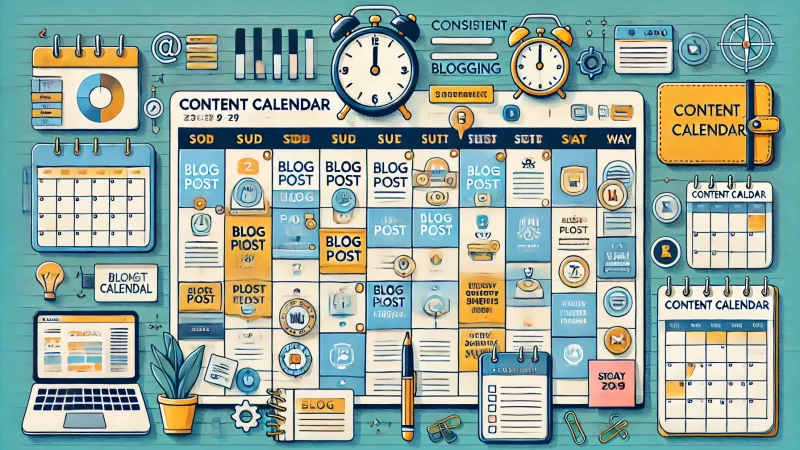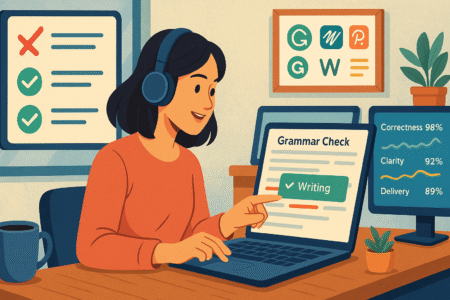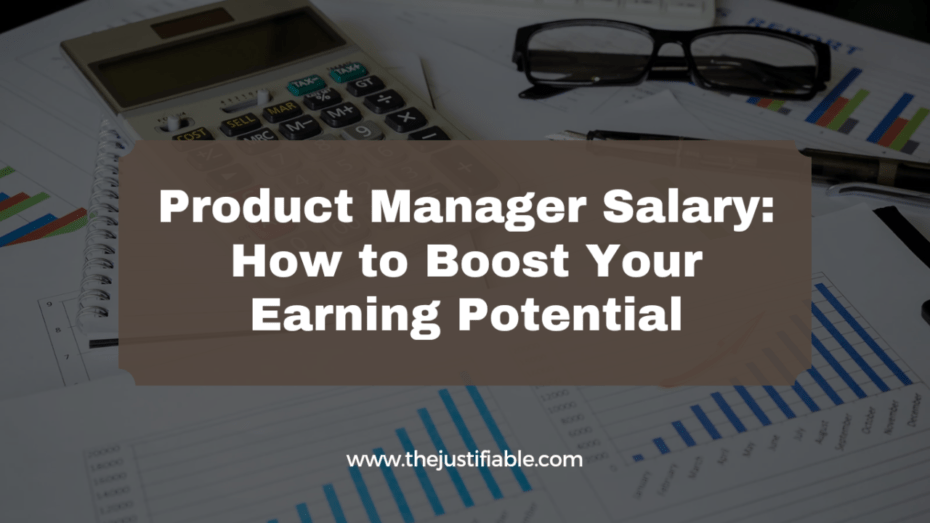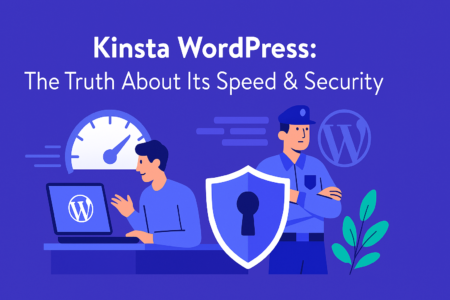Table of Contents
Are you wondering how to start a personal blog that stands out? Are you passionate about writing but unsure how to make your blog unique in today’s crowded online space?
If so, this guide is for you! Starting a personal blog may seem daunting, but with the right approach, you can create something special that resonates with readers and even generates income.
Whether you aim to share personal experiences, build an audience, or monetize your content, this article will cover everything you need to know. We’ll explore the step-by-step process of setting up your blog, writing content that captivates, and strategies to promote your blog effectively.
Why Start A Personal Blog And How It Benefits You
Starting a personal blog offers incredible opportunities for self-expression and connection. I believe that a personal blog gives you the space to share your thoughts, experiences, and passions with a global audience. It helps you grow as a writer and communicator while building a unique identity online.
Additionally, a blog offers long-term benefits, including personal growth, learning, and the potential to earn income. I suggest anyone looking to create a personal platform to take this opportunity seriously. Not only can you connect with like-minded individuals, but you can also turn your blog into a brand that stands out.
What Motivates People To Start A Blog?
Many people start a blog because they want to share their thoughts and experiences with the world. It’s a way to document their journey and connect with others. I think it’s a personal drive to create something that reflects who they are.
For some, blogging is about learning and growing. It pushes you to research, write, and develop new skills. Others see blogging as a way to give back to a community or to make a positive impact. The reasons are as diverse as the bloggers themselves.
I’ve noticed that some start a blog to inspire or help others through shared knowledge. Whether it’s offering advice, sharing tips, or telling stories, blogging has the potential to change lives—both the reader’s and the writer’s.
There’s also a strong desire for freedom and self-expression. Many bloggers feel constrained by traditional jobs or societal expectations and find blogging to be an outlet to speak their truth.
Lastly, for some, it’s about building a personal brand. Blogging helps position you as an expert in your niche, opening doors for personal and professional opportunities. It’s exciting to see where a blog can take you!
Personal Blogging As A Tool For Self-Expression
Blogging is a powerful tool for expressing your thoughts, feelings, and ideas. I find it liberating because it allows you to share what matters most to you without constraints. It’s an excellent outlet for creativity, whether you love writing, photography, or both.
You can also tailor your blog to reflect your personality and passions. Blogging gives you the freedom to explore topics you’re passionate about, share stories, and even create art through words. I emphasize that this makes personal blogging so fulfilling.
I recommend using your blog as a personal canvas where you can experiment with different forms of content. From long-form articles to creative posts, the possibilities are endless. Each post you create represents a part of your journey and growth.
Your blog also gives you a voice, helping you communicate your views and opinions. I believe this sense of ownership over your content is empowering and builds confidence in expressing yourself.
In a world filled with distractions, a blog allows you to focus on what truly resonates with you. It’s where you can be authentic, connect with others, and, most importantly, stay true to your unique vision.
How Blogging Helps You Build Your Personal Brand
A personal blog is one of the most effective tools for building a personal brand. I’ve seen bloggers transform from unknown writers to thought leaders in their fields simply by sharing valuable content consistently. Your blog becomes a digital portfolio showcasing your expertise.
Building a personal brand through blogging allows you to establish credibility. As you write about your niche, readers begin to trust you. Over time, this trust translates into authority, and you’ll become known as someone knowledgeable in your space.
Blogging also helps you stand out from the crowd. I think what sets a blog apart is the voice behind it—your voice. No one else can replicate your unique experiences and perspective, which gives you an advantage.
Through consistent posting and engagement, you can develop a loyal readership. These readers become your brand advocates, sharing your content and helping your brand grow. This connection is vital for long-term success.
Finally, blogging positions you for opportunities. I’ve found that a well-managed blog opens doors to collaborations, speaking engagements, and even job offers. It’s more than just a hobby; it’s a tool for personal and professional growth.
The Potential To Make Money With A Blog
Monetizing your blog is an exciting prospect, and I believe it’s one of the most appealing aspects of personal blogging. With the right strategies, a blog can evolve from a passion project into a source of income. The opportunities are limitless.
Affiliate marketing is a popular way to earn money from your blog. By promoting products you love and trust, you can earn a commission for every sale made through your affiliate links. I suggest choosing products that align with your blog’s niche.
Sponsored content is another option. Brands may approach you to create content that features their products or services. I think this is a fantastic way to collaborate with companies you admire while providing value to your readers.
You can also make money through ad revenue. By placing ads on your blog, you earn income based on the number of impressions or clicks. I advise researching different ad networks to find the one that works best for you.
Another great option is selling digital products. Whether it’s eBooks, courses, or design templates, creating and selling products related to your niche can be highly profitable. I find this to be a rewarding way to monetize your expertise.
Ultimately, blogging offers multiple revenue streams. As long as you stay consistent and deliver value, I believe you can build a successful and profitable blog.
Choosing The Right Niche For Your Personal Blog

Picking the right niche is one of the most important steps in starting a personal blog. I suggest taking time to consider your interests and what topics you’re passionate about. A clear, focused niche helps you target the right audience and stand out.
Your niche also shapes the content you’ll create. I advise focusing on something that excites you because that enthusiasm will come across in your writing. When you’re passionate about your topic, readers will feel it, and they’ll be more engaged.
The Importance Of A Well-Defined Niche
Choosing a well-defined niche is crucial for attracting the right readers. I recommend narrowing your focus so that your blog appeals to a specific group. This makes it easier to produce content that resonates with your audience.
A defined niche also helps with SEO, as you can optimize your blog posts for more targeted keywords. I’ve noticed that blogs with clear niches tend to rank higher because they focus on delivering specific information to their audience.
I think it’s essential to understand that your niche sets the tone for your entire blog. Whether you’re into travel, fashion, tech, or fitness, I suggest choosing a niche you can write about consistently and confidently.
Once you choose a niche, stick with it. Changing your focus too often can confuse readers and hurt your blog’s growth. I recommend honing in on your passion and creating content that fits within that space.
Lastly, I advise staying authentic to your niche. Don’t choose a topic just because it’s trending. When you’re passionate about your subject, your readers will notice, and they’ll keep coming back for more.
How To Identify A Passionate Blogging Topic
Identifying a blogging topic you’re passionate about is key to long-term success. I suggest reflecting on what excites you, what you’re knowledgeable about, and what you can talk about endlessly. Passion is the driving force behind great content.
Think about your hobbies and interests. I’ve found that blogs centered around personal experiences often resonate the most. Writing about something close to your heart ensures you won’t run out of ideas, and your enthusiasm will keep readers hooked.
It’s also a good idea to consider topics you’re already invested in learning. I believe that the more you know about a subject, the more credible and engaging your blog will be. Continuous learning can fuel your content creation process.
If you’re unsure, I advise brainstorming a list of topics that excite you. Once you have a list, narrow it down by considering your long-term interest. I find that combining passion with audience demand creates the best blogging topics.
Finally, test your topic with a few blog posts. I recommend seeing how your audience reacts. If you enjoy writing about it and your readers respond well, you’ve likely found the right topic.
Researching Audience Interests And Niche Popularity
Researching your audience’s interests is just as important as choosing a niche. I suggest diving deep into what your potential readers are searching for. This ensures your blog addresses their needs and questions, making it more valuable and engaging.
You can use tools like Google Trends or Answer the Public to discover what’s popular in your niche. I’ve found that keyword research provides invaluable insights into what your audience cares about, helping you tailor content to meet their needs.
I advise looking at other successful blogs in your niche. What are they writing about, and what topics seem to get the most engagement? By analyzing competitors, I think you can find gaps in content that you can fill with your blog.
It’s important to balance your interests with what’s popular. I recommend not straying too far from what your audience wants while ensuring you stay true to your passion. It’s a fine line, but I believe it leads to a successful blog.
Lastly, engage with your readers to find out what interests them directly. I’ve noticed that asking questions in blog posts, newsletters, or social media can reveal new topics to explore and keep your content relevant.
Avoiding Common Niche Selection Mistakes
Avoiding mistakes when choosing your niche is crucial for success. I’ve seen bloggers struggle because they chose a niche that was too broad. I suggest narrowing your focus to a specific subtopic that allows you to stand out in a crowded space.
Another common mistake is picking a niche solely for profitability. While making money is a great goal, I believe it’s essential to have genuine interest in your niche. Blogging about something you don’t care about will lead to burnout.
I also advise against jumping on trends without considering longevity. I’ve noticed that blogs centered around fleeting topics often fade out once the trend dies. Choose something that will keep your interest for years to come.
Additionally, I recommend not picking a niche you know little about. It’s important to have some level of expertise in your chosen field, or at least a willingness to learn. Readers come to your blog for value, and I believe that your knowledge is key.
Finally, be mindful of your competition. I suggest researching the competitive landscape of your niche. If the field is saturated, it may be challenging to break through, so try to find a unique angle that sets your blog apart.
Essential Blogging Platforms To Consider For Beginners
Choosing the right blogging platform is one of the first steps in creating your blog. I recommend considering both free and paid options depending on your goals. Free platforms are ideal for beginners, while paid options offer more control and customization.
I believe that understanding the differences between platforms helps you make the best choice for your blog. Some platforms are more user-friendly, while others provide more advanced features. I suggest evaluating your long-term goals before making a decision.
Free vs. Paid Blogging Platforms: What’s Best For You?
Free platforms like WordPress.com and Blogger are great for beginners. I think they allow you to get started quickly without any upfront costs. However, these platforms come with limitations, especially in terms of customization and monetization options.
Paid platforms, such as self-hosted WordPress.org, offer more flexibility. I believe they are a better choice for bloggers who plan to scale their blogs over time. With paid platforms, you can customize your blog to reflect your personal style and add features as needed.
I advise beginners to start on a free platform if they are unsure about long-term blogging. It gives you a feel for the process without any financial commitment. However, if you’re serious about growing your blog, a paid platform will provide more opportunities.
It’s essential to understand that free platforms often place ads on your blog, and you don’t have full control over monetization. I suggest considering a paid option once you’re ready to take your blog to the next level.
Lastly, I recommend evaluating the cost of paid platforms. While they provide more benefits, they also require an investment. If you plan on monetizing your blog, I believe that this investment will pay off in the long run.
WordPress vs. Blogger: Which One Should You Choose?
WordPress and Blogger are two of the most popular blogging platforms. I suggest WordPress for bloggers who want full control over their site’s design and functionality. WordPress offers a range of themes, plugins, and customization options that I find extremely useful.
Blogger, on the other hand, is easier to use and perfect for beginners. I believe that if you’re looking for simplicity and don’t need a lot of customization, Blogger is a great choice. It’s also owned by Google, which makes integration with other Google services seamless.
I think WordPress is a better option for those who want to scale their blog in the future. Its versatility and customization capabilities are unmatched. You can start small and gradually build out your site as your blog grows.
Blogger’s simplicity is its main advantage, but I’ve noticed that it lacks the flexibility that more advanced bloggers often need. If you want a basic blog without too many bells and whistles, I recommend giving Blogger a try.
Ultimately, I suggest weighing the pros and cons of both platforms based on your goals. WordPress is ideal for those who want control, while Blogger is better for those looking for an easy-to-use, beginner-friendly platform.
Customizable Themes For A Unique Look
One of the best ways to make your blog stand out is through its design. I suggest choosing a customizable theme that reflects your blog’s personality. WordPress offers thousands of themes, both free and paid, that allow you to tailor your blog’s appearance.
Blogger also provides theme customization options, though they are more limited than WordPress. I think a well-designed theme can create a memorable user experience and keep readers engaged with your content. First impressions matter!
I recommend selecting a theme that is responsive, meaning it adjusts to different screen sizes. This ensures your blog looks great on any device, which is critical for today’s mobile-first world. I believe that responsive design improves user experience.
Once you’ve selected a theme, I advise customizing it to match your branding. From color schemes to fonts, small details can make a big impact. I find that personalizing your theme helps distinguish your blog from others in the same niche.
Lastly, I suggest keeping your design clean and clutter-free. A minimalist approach often works best, as it puts the focus on your content. I believe that simplicity in design helps improve readability and keeps visitors coming back for more.
Crafting A Unique Blog Name And Domain That Reflects Your Brand

Creating a distinctive blog name and domain is crucial to building your personal brand. I believe your blog name sets the first impression for visitors and conveys what your blog is about. A memorable name can capture attention and help your blog stand out.
Additionally, your domain should be easy to remember, type, and spell. I recommend securing a domain that aligns with your blog name, as it solidifies your branding. Choosing a domain name is one of the first steps toward creating a recognizable and professional online presence.
Why Your Blog Name Matters For Standing Out
A unique blog name helps differentiate your site from countless others online. I suggest selecting a name that reflects your blog’s essence and purpose. A catchy, meaningful name creates a lasting impression and encourages readers to remember and return.
The name you choose also helps shape your brand’s identity. I’ve learned that when your blog name reflects your personality or niche, it instantly communicates value to potential readers. This connection between your blog name and brand is critical for growth.
An easy-to-remember blog name simplifies word-of-mouth promotion. I suggest thinking of names that roll off the tongue and are easy to spell. This way, your readers can easily share it with others, increasing your blog’s visibility and reach.
I’ve noticed that consistency is key when it comes to branding. Your blog name should be the same across social media platforms, ensuring that your audience can find and follow you easily. I think this helps create a cohesive online presence.
Avoid using overly complicated names that could confuse your readers. I suggest keeping it short, simple, and relevant to your content. This approach helps your blog feel approachable and professional at the same time.
Steps To Secure The Perfect Domain For Your Personal Blog
Choosing the right domain is just as important as your blog name. I advise using a domain registrar like Namecheap or GoDaddy to check for availability. Ideally, you want to secure a .com domain, as it’s the most recognized and trusted extension.
If your ideal domain is taken, I recommend getting creative. Adding a keyword or slight variation can help you find an available domain that still represents your brand. This flexibility ensures that you can still have a domain name that resonates with your audience.
Once you’ve found the perfect domain, I suggest registering it as soon as possible. Domains are often bought quickly, so it’s essential to act fast once you decide. You’ll also want to renew your domain annually to maintain ownership and prevent others from claiming it.
Consider the length of your domain. I think shorter domains are easier to remember and type, which enhances user experience. If possible, keep it under 15 characters while ensuring it accurately reflects your blog’s focus and identity.
Lastly, don’t forget about privacy protection. I advise purchasing domain privacy to hide your personal details from the public. This small investment protects your privacy and prevents unwanted spam or solicitation.
Tips On Brainstorming Blog Name Ideas
Brainstorming a blog name can be a fun but challenging process. I suggest starting with a list of words related to your niche, interests, or personality. Combining these words can help generate unique and creative ideas that capture the spirit of your blog.
Think about what sets your blog apart. I believe that focusing on your unique perspective can inspire name ideas that reflect your individuality. Highlighting your passions or values in your blog name helps build a personal connection with readers.
I recommend experimenting with different word combinations and variations. You might try blending two words, creating a pun, or using alliteration for a catchy effect. This approach helps craft a memorable name that sticks with your audience.
Get feedback from friends, family, or online communities. I’ve found that an outside perspective can offer fresh ideas and insights. Other people may notice something you hadn’t considered, which can help refine your options.
Don’t rush the process. I suggest taking your time to brainstorm and evaluate each option. Your blog name will play a significant role in your brand’s success, so it’s important to choose a name you’ll be proud of for years to come.
Setting Up Your Blog’s Hosting And Understanding Its Importance
Reliable hosting is essential for your blog’s performance and growth. I recommend investing in a trustworthy hosting provider that ensures your site runs smoothly. Your hosting choice affects everything from page load speed to security, so choosing wisely is key.
Good hosting provides the foundation for your blog’s success. I advise beginners to research their options and select a hosting service that fits their budget and needs. With reliable hosting, your blog will be accessible to readers 24/7, which builds credibility and trust.
Reliable Hosting Options For Beginners
If you’re new to blogging, I suggest starting with shared hosting. Providers like Bluehost or SiteGround offer affordable packages that cater to beginners. Shared hosting is cost-effective and provides all the basic tools you need to get your blog up and running.
For more advanced users, I recommend VPS or managed WordPress hosting. These options offer better performance and scalability, which is important as your blog grows. I find that these plans are great for handling larger amounts of traffic and improving speed.
One hosting option I often recommend is HostGator for its affordability and ease of use. It offers 24/7 support, which I find incredibly helpful for beginners. Plus, they provide a free domain for the first year, which simplifies the setup process.
I’ve also heard positive reviews about A2 Hosting, particularly for its speed and reliability. Speed plays a critical role in user experience, and A2 Hosting excels in delivering fast load times. Faster websites rank better and keep readers engaged.
Finally, don’t overlook the importance of uptime. I advise choosing a hosting provider with an uptime guarantee of 99.9% or higher. Downtime can hurt your blog’s reputation, and reliable hosting ensures that your site is always accessible to readers.
Key Factors To Consider When Selecting Hosting
When choosing a hosting provider, I suggest considering factors like pricing, speed, and customer support. While price is important, I think you should prioritize performance and support, as these will impact your blog’s overall success and reader experience.
Uptime guarantees are another factor I value. Look for hosting providers that promise minimal downtime. This ensures your blog remains accessible to readers at all times, which is essential for building credibility and trust in your content.
Scalability is key for long-term success. I recommend selecting a hosting plan that can grow with your blog. As traffic increases, you’ll need more bandwidth and resources. Hosting providers that offer easy upgrades make scaling your blog seamless.
Security is non-negotiable. I’ve learned that good hosting includes features like SSL certificates, firewalls, and automatic backups. These protect your blog from cyber threats, and I think investing in secure hosting gives you peace of mind.
Finally, I suggest checking out the customer service options. Choose a provider with responsive support, preferably available 24/7. I find that quick access to help, especially during technical issues, saves time and prevents frustrations.
How Good Hosting Enhances Blog Performance
Good hosting significantly improves your blog’s performance. Faster load times lead to better user experiences, which keeps readers on your site longer. I believe that when your blog loads quickly, it creates a positive impression and reduces bounce rates.
Search engines also reward faster websites with better rankings. I’ve noticed that search algorithms favor sites with optimal performance, and I recommend prioritizing speed for both SEO and user engagement. A well-optimized blog attracts more organic traffic.
Downtime can hurt your blog’s reputation, so I suggest choosing a host with a high uptime guarantee. Consistent uptime ensures that your readers can access your blog anytime, and this reliability builds trust and loyalty over time.
Reliable hosting also provides better security features, protecting your blog from hacks or data breaches. I value these features because they protect both your content and your readers’ information. Good security enhances your blog’s credibility.
Lastly, a good hosting provider offers regular backups. I advise using a host that provides automatic backups, so you never have to worry about losing your content. This added protection is invaluable, especially if your blog grows into a business.
Designing A Blog That Stands Out With User-Friendly Themes

A well-designed blog captures attention and keeps visitors engaged. I suggest choosing a user-friendly theme that reflects your blog’s purpose and personality. A visually appealing and easy-to-navigate blog helps create a memorable experience for your audience.
Your blog’s design plays a big role in how readers perceive your content. I believe that investing in a theme that complements your brand helps your blog stand out and leaves a lasting impression. A clean, professional design encourages readers to explore your posts.
Choosing A Visually Appealing Blog Theme
Selecting the right theme is an exciting step in designing your blog. I recommend choosing a theme that aligns with your blog’s content and values. For example, a photography blog may require an image-heavy theme, while a personal blog may need something simple and text-focused.
WordPress offers a wide variety of free and premium themes. I think it’s a good idea to explore both options, as premium themes often offer more customization features. Premium themes also typically come with better support, which I find valuable as your blog grows.
A well-designed theme enhances readability. I suggest avoiding cluttered layouts and opting for minimalism. Clean themes with ample white space allow readers to focus on your content without distractions. This design choice keeps your blog looking professional and polished.
I’ve noticed that color schemes are just as important as layout. I recommend selecting colors that reflect your brand and are easy on the eyes. High-contrast color combinations, like black text on a white background, improve readability and accessibility.
Lastly, I advise testing your theme on mobile devices before making a final decision. Mobile traffic is significant, and a responsive theme ensures that your blog looks great on all screen sizes. This is a crucial factor for maintaining a positive user experience.
How A Responsive Design Improves User Experience
A responsive blog design adjusts automatically to different screen sizes. I believe this feature is critical, as more people use mobile devices to browse the internet. A blog that isn’t mobile-friendly may lose readers, so I recommend choosing a responsive theme.
Responsive designs also improve navigation. I think that when a blog is easy to browse on any device, readers stay longer and explore more pages. This keeps your bounce rate low and encourages visitors to return for more content.
Mobile users expect fast load times. I suggest optimizing images and other media to ensure your blog loads quickly on smartphones and tablets. A slow-loading site can frustrate users, and I find that optimizing speed helps retain visitors.
Search engines also favor responsive websites. I’ve learned that Google’s algorithms rank mobile-friendly blogs higher in search results, making responsiveness a key factor for SEO. I suggest prioritizing a responsive design to improve both user experience and search rankings.
Lastly, a responsive design ensures that your blog looks consistent across all devices. I believe that maintaining brand consistency builds trust and professionalism, whether your readers visit your blog on a desktop or smartphone.
Customizing Your Theme To Match Your Blog’s Personality
Customizing your blog’s theme is a great way to make it unique. I recommend personalizing elements like colors, fonts, and layouts to match your brand’s identity. A customized theme reflects your personality and makes your blog feel authentic.
WordPress themes offer a range of customization options, and I suggest exploring these features to create a look that stands out. For example, you can adjust the header, footer, and sidebar to match your style, which makes your blog more cohesive.
I find that adding a custom logo or favicon enhances your blog’s professionalism. Your logo is part of your branding, and I think including it in your design helps readers recognize your blog across different platforms.
Widgets and plugins offer additional customization options. I recommend adding useful features like social media buttons, search bars, and email signup forms to your blog. These elements improve functionality while giving your blog a more polished look.
Lastly, I advise ensuring that your theme customization doesn’t negatively impact your blog’s performance. While it’s tempting to add many features, I suggest focusing on the essentials to maintain speed and functionality.
Writing Engaging Blog Posts That Resonate With Your Audience
Writing engaging blog posts is essential for building a loyal readership. I believe the key to captivating readers lies in delivering content that is both valuable and relatable. Every post should address your audience’s needs while showcasing your unique voice and perspective.
When your blog posts resonate with readers, they are more likely to share, comment, and return. I suggest focusing on creating content that offers actionable insights, helpful tips, or inspiring stories. Connecting emotionally with your audience ensures they keep coming back for more.
Content Strategies To Keep Readers Hooked
To keep readers engaged, I recommend structuring your content with short paragraphs and clear subheadings. Breaking up large blocks of text makes your posts more readable and approachable. I find that adding images or infographics can also enhance engagement.
You should also consider using storytelling techniques. I’ve noticed that readers connect more deeply with blogs that weave in narratives, whether they’re personal anecdotes or examples from others. Stories keep readers invested and help illustrate your points in a relatable way.
Using questions in your content can spark curiosity and encourage readers to think about the topic more critically. I suggest posing thought-provoking questions that lead to self-reflection or inspire your audience to take action. This interaction makes your content more dynamic.
Another strategy is to provide value upfront. I believe that offering readers something useful—whether it’s a free resource, a tip, or a solution—keeps them invested in reading your blog. When people feel like they’ve gained something, they’ll stay engaged.
Finally, I recommend creating a clear call-to-action (CTA) at the end of your posts. Whether it’s asking for a comment, a social media share, or a newsletter signup, a strong CTA helps keep your readers connected to your blog long-term.
How To Use Personal Stories To Build A Connection With Readers
Sharing personal stories is one of the most powerful ways to connect with your audience. I think it’s important to open up about your experiences because it humanizes your content. Readers feel more connected when they can relate to the person behind the blog.
Personal stories also build trust. I find that when you share challenges or successes you’ve experienced, readers are more likely to believe in your advice. They see you as an authentic voice who has lived through similar situations, which fosters loyalty.
When telling stories, I suggest being honest and vulnerable. Readers appreciate authenticity, and I’ve noticed that blogs with genuine stories tend to attract more engagement. You don’t have to share everything, but I advise being transparent where it counts.
I also recommend tying your personal stories to lessons or insights. While your experience is valuable, it’s important to offer readers something they can take away from the story. I think this combination of narrative and actionable advice makes your blog more impactful.
Using humor or emotion in your storytelling can further deepen the connection. I’ve found that lighthearted anecdotes or heartfelt moments make readers feel more engaged. The emotional aspect of your writing leaves a lasting impression on your audience.
Crafting Powerful Headlines That Capture Attention
A great headline is the first step to grabbing a reader’s attention. I believe that using power words in your headlines can make them more compelling and irresistible. Words like “ultimate,” “proven,” or “secret” create a sense of urgency and curiosity.
When crafting headlines, I suggest focusing on clarity. I’ve noticed that headlines which clearly state what the post is about tend to perform better. Readers want to know exactly what they’ll gain from clicking on your blog, so I recommend being straightforward.
You can also experiment with using numbers in your headlines. I find that listicles, like “5 Proven Strategies,” tend to attract more clicks because they promise quick and actionable information. Numbered posts are easy to digest and appeal to readers looking for solutions.
Another technique I advise is to create a sense of exclusivity. Headlines like “What Only Experienced Bloggers Know” make readers feel like they’re getting insider information. This strategy plays into the desire to learn something that not everyone knows.
Lastly, I suggest testing different headline styles. Tools like CoSchedule’s Headline Analyzer help you refine your titles for maximum impact. I’ve learned that even small tweaks to your headline can significantly improve click-through rates and reader engagement.
Building A Content Calendar To Keep Your Blogging Consistent

Consistency is crucial for blogging success. I believe that a well-organized content calendar helps you stay on track with regular posts, which keeps your readers engaged. Planning ahead ensures that you never run out of ideas or fall behind on publishing.
A content calendar allows you to strategically plan your topics, ensuring a good balance between evergreen content and timely posts. I recommend using a calendar to visualize your schedule, giving you a clear roadmap for the weeks or months ahead.
Why Consistency Is Key To A Successful Personal Blog
Consistency builds trust with your audience. I’ve noticed that readers are more likely to return when they know you publish regularly. Posting on a set schedule, whether it’s weekly or bi-weekly, helps build anticipation and keeps your blog top of mind.
Frequent posting also signals to search engines that your blog is active. I recommend maintaining a consistent publishing schedule to improve your blog’s SEO performance. Search engines favor fresh, relevant content, which can lead to better rankings over time.
I suggest setting realistic goals for your blogging frequency. Don’t overcommit if you know you can’t keep up. I’ve found that it’s better to post consistently once a week than to publish sporadically with long gaps in between.
Consistency also helps you stay organized. I believe having a plan in place prevents the stress of coming up with last-minute topics. A content calendar ensures that you always have ideas ready to go, making the blogging process smoother.
Lastly, consistency allows you to grow a loyal audience. When readers know when to expect new content, they’re more likely to keep coming back. I’ve noticed that blogs with regular posting schedules tend to have higher engagement and reader retention.
Using Tools Like Google Calendar And Trello To Plan Your Content
I recommend using tools like Google Calendar or Trello to organize your content schedule. Google Calendar is great for setting deadlines and reminders. You can color-code your posts, track progress, and receive notifications, helping you stay on top of your blogging goals.
Trello is another tool I suggest for managing your content workflow. With its board and card system, you can easily plan, write, and publish content. I find that Trello’s drag-and-drop feature makes it simple to move tasks from “ideas” to “completed.”
Both tools are useful for team collaboration. If you work with others, I advise sharing your content calendar with your team. This allows everyone to stay aligned on deadlines and ensures the content production process runs smoothly.
I also recommend creating a content “backlog” in Trello, where you store post ideas that aren’t time-sensitive. This way, you always have a reserve of topics to pull from when needed. I’ve found this helpful for maintaining consistency.
Lastly, these tools allow for flexibility. While planning is important, I think it’s equally crucial to adapt your schedule if necessary. Tools like Trello and Google Calendar let you easily adjust deadlines without losing track of your overall plan.
Setting Realistic Blogging Goals And Sticking To Them
Setting realistic goals helps you stay motivated and focused on your blogging journey. I suggest starting with small, achievable milestones, such as publishing once a week or reaching a certain word count. These goals keep you on track without overwhelming you.
I find that tracking your progress is key to maintaining motivation. Whether it’s through a content calendar or a simple checklist, I advise marking each completed post. Celebrating these small wins can keep you engaged and excited about your blog.
It’s important to balance ambition with practicality. I recommend setting goals that challenge you but are still within reach. I’ve seen many bloggers burn out because they set expectations too high, only to feel discouraged when they couldn’t meet them.
I think it’s also helpful to break larger goals into smaller tasks. For example, instead of aiming to “increase traffic,” focus on specific actions like writing SEO-optimized posts or promoting your blog on social media. This step-by-step approach leads to more progress.
Lastly, I believe accountability plays a role in goal-setting. Share your goals with a fellow blogger or friend who can check in with you. Having someone to keep you accountable increases the likelihood that you’ll stay on track with your blogging efforts.
Optimizing Your Blog For SEO Success And Organic Traffic Growth
SEO optimization is vital for driving organic traffic to your blog. I believe that by using SEO best practices, you can improve your search engine rankings and attract more visitors. Optimizing each post helps ensure your content is seen by the right audience.
I suggest focusing on both on-page and off-page SEO techniques to enhance your blog’s visibility. The more optimized your blog is, the more likely you are to rank higher on Google, leading to long-term traffic growth and better engagement.
Using Keywords Effectively In Blog Posts
I recommend starting with thorough keyword research before writing any blog post. Tools like SEOPowersuite or Ubersuggest help you identify relevant keywords for your niche. I think targeting the right keywords increases your chances of ranking for specific search terms.
When using keywords, I suggest placing them naturally within your content. Keyword stuffing can hurt your SEO, so I advise incorporating them in a way that flows smoothly. Keywords should be included in headings, introductions, and throughout the body text.
Long-tail keywords are especially effective for driving targeted traffic. I believe that focusing on specific, niche phrases helps attract readers who are looking for exactly what your blog offers. These keywords often have less competition, making it easier to rank.
I’ve found that using related keywords can enhance your post’s relevance. Tools like LSI Graph help you find related terms to sprinkle throughout your post. This technique improves your chances of ranking for a variety of search queries, not just the primary keyword.
Lastly, I suggest updating old posts with new keywords. As your blog grows, revisiting older content and optimizing it with current keywords can give it a second life, improving its ranking and bringing in new traffic.
On-Page SEO Techniques For Beginners
On-page SEO refers to optimizing individual blog posts to rank higher in search results. I recommend starting with meta tags—specifically your title tag and meta description. These tags should include your main keyword and be concise yet compelling to attract clicks.
Using headings (H1, H2, H3) is another critical on-page SEO technique. I think structuring your content with descriptive headings helps search engines understand your post’s topic. Readers also benefit from organized content that’s easier to navigate.
I advise focusing on internal linking. By linking to other relevant posts within your blog, you help readers explore more of your content while improving SEO. Internal links also signal to search engines that your site has valuable, connected content.
Another important factor is optimizing images. I suggest compressing images to reduce load time and using descriptive alt tags for SEO. Alt tags not only improve accessibility but also help search engines understand the content of your images.
Lastly, I recommend including a clear call-to-action at the end of each post. Encouraging readers to engage, whether by leaving a comment or sharing the post, boosts interaction and signals to search engines that your content is valuable.
The Importance Of Meta Descriptions And Alt Tags
Meta descriptions are brief summaries that appear below your blog title in search results. I suggest crafting a compelling meta description that includes your primary keyword. A well-written meta description can increase your click-through rate and drive more traffic to your blog.
I believe that meta descriptions should highlight the benefits of reading your post. Tell readers what they’ll gain by clicking. I’ve found that clear, benefit-driven descriptions attract more attention than generic summaries.
Alt tags are equally important for image optimization. I recommend using descriptive alt text for every image on your blog. Not only does this improve accessibility for visually impaired users, but it also helps search engines index your content more effectively.
I suggest using alt tags to include relevant keywords where appropriate. This subtle SEO technique can help your images rank in Google Image Search, driving additional traffic to your blog. However, I think it’s important to avoid keyword stuffing in alt tags.
Lastly, I advise keeping both meta descriptions and alt tags concise. Search engines have character limits, so I suggest keeping your meta descriptions under 160 characters and alt tags under 125 characters for optimal results.
Promoting Your Personal Blog Through Social Media Channels

Social media plays a vital role in growing your personal blog. I believe it’s one of the most effective ways to promote your content and connect with a broader audience. Platforms like Instagram, Twitter, and Facebook allow you to share your blog posts with millions of potential readers.
Additionally, social media gives you the opportunity to engage directly with your audience. I find that regular interaction with your followers not only increases your blog’s visibility but also builds stronger relationships. The more you engage, the more loyal your audience becomes.
Why Social Media Is Essential For Blog Growth
Social media amplifies your blog’s reach. I suggest using platforms to attract readers who may not have found your blog through search engines. By sharing your posts on social media, you increase the chances of reaching people with similar interests.
Another advantage of social media is the ability to share updates instantly. I’ve noticed that when bloggers post consistently, their engagement grows. Regular social media updates keep your blog fresh in the minds of your followers, encouraging them to visit more often.
You can also use social media to gain valuable feedback. I recommend posting questions or polls to get input from your followers. This feedback helps you tailor future blog posts to better meet your readers’ needs, creating content that resonates more deeply.
Social media platforms also offer powerful analytics tools. I find these helpful for understanding what types of content perform best. Knowing which posts get the most shares or likes can guide you in creating content that continues to engage your audience.
Lastly, social media gives you the chance to collaborate with other bloggers and influencers. I suggest reaching out to others in your niche for guest posts or cross-promotions. Collaborations broaden your audience and build credibility within your blogging community.
How To Share Your Blog Content On Platforms Like Instagram, Twitter, And Facebook
Sharing your blog on Instagram, Twitter, and Facebook helps maximize visibility. I suggest tailoring your content for each platform to suit its audience and format. Instagram, for example, is visually-driven, so I recommend using high-quality images and compelling captions to promote your posts.
On Twitter, I find that shorter, snappier content works best. I suggest using attention-grabbing headlines and hashtags to increase your blog post’s discoverability. Twitter’s fast-paced environment is ideal for sharing updates and engaging in real-time conversations.
Facebook is excellent for longer, more detailed posts. I recommend sharing a short excerpt from your blog along with a link, inviting readers to visit your site. Engaging images or videos also help make your Facebook posts stand out in crowded newsfeeds.
I also advise scheduling posts to ensure consistency. Tools like Buffer or Hootsuite allow you to plan and automate your social media updates, saving you time while maintaining an active online presence. Consistency helps keep your blog top of mind for your audience.
Lastly, engage with your followers after sharing your blog. Respond to comments, retweet, and like posts to show appreciation for your audience. I believe this interaction not only fosters loyalty but also increases your blog’s visibility through social sharing.
Using Social Media Marketing To Reach A Wider Audience
Social media marketing offers numerous opportunities to grow your blog’s audience. I suggest running targeted ad campaigns on platforms like Facebook and Instagram to attract new readers. These ads can be tailored to reach specific demographics that align with your niche.
I also recommend using hashtags to expand your reach. Hashtags help your content get discovered by people interested in the topics you blog about. I’ve noticed that using popular, relevant hashtags on Instagram and Twitter can significantly boost post visibility.
Collaborating with influencers or other bloggers is another powerful strategy. I believe that partnering with established voices in your niche allows you to tap into their follower base, driving new readers to your blog. Look for influencers who share your audience’s interests.
Giveaways and contests are another fun way to promote your blog on social media. I suggest creating a giveaway where users must follow your blog or share your content to enter. This not only engages your audience but also encourages them to spread the word about your blog.
Finally, don’t underestimate the power of organic growth. I advise sharing valuable, high-quality content consistently. Over time, this helps build your reputation as a trusted source in your niche, which naturally attracts a loyal following.
Making Money From Your Personal Blog Through Monetization
Monetizing your blog can turn your passion into profit. I’ve heard countless success stories of bloggers who transformed their personal blogs into lucrative businesses. There are several ways to generate income from your blog, from affiliate marketing to sponsored content.
Earning money through your blog requires strategy and persistence. I recommend focusing on building a strong foundation with quality content and a loyal readership first. Once you have a steady audience, you can explore various monetization options to grow your income.
Exploring Various Ways To Monetize Your Blog
There are many ways to make money from your blog, and I suggest diversifying your income streams for the best results. Affiliate marketing is a popular option where you promote products and earn a commission for each sale made through your referral links.
Another way to monetize your blog is through ads. I advise placing ads strategically on your blog using networks like Monetag. As your traffic grows, ads can become a steady source of passive income, especially for blogs with a large readership.
Sponsored content is another lucrative option. I’ve noticed that brands often pay bloggers to write posts featuring their products. I recommend partnering with companies that align with your blog’s niche to maintain authenticity and trust with your readers.
If you offer specialized knowledge, consider creating and selling digital products, like eBooks or online courses. I find that these products not only generate income but also position you as an expert in your field, attracting even more opportunities.
Finally, you can monetize your blog through membership or subscription models. Offering premium content or exclusive access to certain posts can encourage loyal readers to subscribe, providing you with a steady monthly income stream.
How To Use Affiliate Marketing On Your Personal Blog
Affiliate marketing is a powerful way to earn passive income. I suggest signing up for affiliate programs that align with your niche, such as Amazon Associates or ShareASale. These programs allow you to promote products you believe in and earn a commission on sales.
When incorporating affiliate links, I recommend naturally embedding them within your content. I’ve found that placing links in product reviews, tutorials, or recommendations works best, as these posts are more likely to convert readers into buyers.
It’s crucial to build trust with your audience, so I advise being transparent about your affiliate partnerships. Readers appreciate honesty, and I believe that clearly disclosing affiliate links fosters trust and encourages readers to support your blog.
Another tip is to focus on promoting products you’ve personally used or genuinely believe in. I think readers can sense when a recommendation is authentic, which leads to higher conversions. Your personal experience with a product adds credibility to your endorsement.
Lastly, track the performance of your affiliate links. I suggest using analytics to see which products resonate most with your audience. This helps you refine your strategy and focus on promoting items that drive the most income.
Using Ads And Sponsored Content To Generate Income
Ads are an easy way to monetize your blog, especially as your traffic grows. I recommend starting with ad networks like Google AdSense, which display relevant ads on your blog and pay you based on impressions or clicks. These ads offer passive income with minimal effort.
Sponsored content is another profitable option. Brands often pay bloggers to create posts or reviews featuring their products. I suggest reaching out to companies that align with your blog’s focus. Sponsored content not only earns money but also strengthens your relationships with brands.
I advise being selective with sponsored content. Only promote products or services that are relevant to your audience. I find that maintaining this authenticity is crucial for retaining the trust of your readers, ensuring they continue to engage with your blog.
It’s important to balance ads and user experience. I suggest placing ads in areas that don’t overwhelm your readers, such as the sidebar or within the content. Too many ads can be distracting, so I think it’s best to strike a balance between monetization and readability.
Lastly, I recommend tracking the performance of your ads. Monitoring metrics like click-through rates helps you optimize ad placement and maximize your income without negatively affecting the user experience on your blog.
Building A Community Of Loyal Blog Readers And Followers

Creating a loyal community is essential for long-term blog success. I believe that by engaging with your readers and fostering connections, you can turn casual visitors into dedicated followers. A strong community helps your blog grow and enhances its overall impact.
Building a community isn’t just about attracting readers—it’s about maintaining relationships with them. I suggest making your readers feel valued and heard by consistently responding to their comments and feedback. Engaged readers are more likely to stay loyal to your blog.
Engaging With Your Audience Through Comments And Feedback
Reader engagement is key to building a thriving community. I advise encouraging comments by asking thought-provoking questions at the end of your blog posts. When readers feel invited to share their thoughts, they’re more likely to engage with your content.
I also recommend responding to comments promptly. I’ve found that interacting with readers builds a sense of connection and shows that you value their input. This interaction encourages more readers to comment and participate in the conversation.
Feedback from your readers is invaluable. I suggest listening to their suggestions and using it to improve your content. Whether it’s through blog comments, social media, or email, reader feedback helps you understand what resonates most with your audience.
Another way to increase engagement is through polls or surveys. I believe that asking your readers for their opinions on blog topics or content ideas makes them feel involved in your blog’s direction, fostering a stronger sense of community.
Finally, I advise creating a welcoming and respectful environment in your comment section. Ensuring that all discussions remain positive encourages more participation, and I’ve noticed that blogs with active, respectful conversations tend to attract more loyal readers.
The Power Of Email Newsletters To Build A Reader Base
Email newsletters are a great way to keep your readers engaged. I recommend building an email list from the start of your blogging journey. Newsletters allow you to stay in touch with your audience and share exclusive content, updates, or promotions directly with them.
In each newsletter, I suggest offering value to your subscribers. Whether it’s sharing a personal story, offering tips, or providing free resources, I’ve found that readers appreciate content that feels special and tailored just for them.
I advise making your email sign-up form easy to find on your blog. Place it in high-visibility areas, such as the sidebar or at the end of your posts. Offering a freebie, like an eBook or printable, can also encourage more readers to subscribe to your newsletter.
Once you have a list, I recommend sending regular emails, but not too frequently. I’ve noticed that newsletters sent on a consistent schedule, such as weekly or bi-weekly, tend to keep readers engaged without overwhelming their inboxes.
Finally, use your email newsletter to build stronger relationships. Personalize your emails by addressing subscribers by name, and include a personal touch in your writing. I think this makes readers feel more connected to you and your blog.
Collaborating With Other Bloggers To Grow Your Network
Collaborating with other bloggers is a fantastic way to expand your reach and build connections. I suggest partnering with bloggers in your niche for guest posts, interviews, or joint projects. These collaborations introduce your blog to a new audience and grow your network.
Guest posting is a great starting point. I’ve found that writing for another blog allows you to showcase your expertise to a new readership. In return, inviting bloggers to contribute to your blog brings fresh perspectives and expands your content variety.
I also recommend participating in blogger link-ups or roundups. These group collaborations allow multiple bloggers to contribute to a single post, increasing exposure for everyone involved. I think this is a great way to build connections with like-minded bloggers.
Networking with other bloggers opens doors for future opportunities. I suggest attending blogging conferences or joining online communities to meet others in your field. Building these relationships often leads to more collaborations, boosting your blog’s visibility.
Lastly, don’t hesitate to promote your collaborators. Sharing their content on social media or mentioning them in your blog posts fosters goodwill and strengthens relationships. I believe that supporting fellow bloggers helps create a positive, collaborative environment.
Learning From Blog Analytics And Adjusting Your Strategy
Blog analytics provide valuable insights into how your blog is performing. I believe regularly reviewing analytics helps you understand what’s working and what needs improvement. By tracking key metrics, you can fine-tune your content strategy and grow your blog more effectively.
Using analytics tools can guide your decision-making. I suggest tracking data like traffic, user behavior, and engagement levels. This information shows you which posts resonate most with readers, allowing you to replicate successful content and refine weaker areas.
Tools Like Google Analytics To Track Your Blog’s Performance
Google Analytics is one of the best tools for monitoring your blog’s performance. I recommend using it to track traffic, see where your visitors come from, and understand how they interact with your content. It provides a comprehensive view of your blog’s strengths and weaknesses.
Another helpful feature of Google Analytics is the ability to see which pages are most popular. I find this data crucial because it reveals which types of posts drive the most traffic. You can focus on creating more content that resonates with your audience.
I also suggest using the real-time tracking feature. It shows you the current activity on your blog, including which posts are being read and how users are navigating through your site. This immediate feedback can help you optimize content for better engagement.
Google Analytics also helps you track your blog’s bounce rate. I think a high bounce rate may indicate that visitors aren’t finding what they’re looking for, signaling a need to improve your content or make navigation easier. Keeping users on your blog longer is key to growth.
Lastly, consider setting up custom goals within Google Analytics. Whether it’s tracking newsletter sign-ups or eBook downloads, I recommend monitoring these goals to see if your blog is meeting its objectives. Adjust your content and strategies based on this data to improve results.
Key Metrics To Focus On For Blogging Success
Page views are a key metric for understanding the popularity of your posts. I recommend tracking how many views each blog post receives to determine which topics or formats resonate most with your readers. Higher page views often reflect more engaging and shareable content.
Bounce rate is another critical metric. I suggest aiming for a lower bounce rate, which indicates that readers are staying on your site and exploring multiple pages. If your bounce rate is high, consider adjusting your internal linking or making your content more engaging.
Time on page reveals how long visitors are staying on each post. I believe longer time on page means your content is valuable and engaging. If visitors are leaving quickly, you may need to improve your post structure, add visuals, or refine your storytelling techniques.
Traffic sources are also important to track. I recommend paying attention to where your readers are coming from—whether it’s social media, search engines, or direct visits. This helps you understand which channels are driving the most traffic and where to focus your promotion efforts.
Finally, conversion rates are crucial for measuring the success of your blog’s calls to action. I advise monitoring how many visitors sign up for your newsletter, download a freebie, or make a purchase. This helps you refine your CTAs to boost conversions and grow your blog’s audience.
How To Adjust Content Strategies Based On Analytics
Once you’ve analyzed your blog’s performance, I suggest using this data to adjust your content strategy. Start by focusing on posts that perform well. I’ve learned that creating more content around popular topics can significantly boost your blog’s traffic and engagement.
If certain posts aren’t performing well, I recommend updating them with fresh information, better keywords, or improved formatting. Repurposing existing content can give it new life and attract more readers. Analytics will show you which posts are worth revisiting.
I believe experimenting with new formats based on analytics is also valuable. For example, if long-form posts perform better, try creating more in-depth content. If listicles or how-to guides get more engagement, you should produce similar content to meet reader preferences.
I advise tracking how often you post and analyzing the impact of your publishing frequency on traffic. If your blog sees more traffic when you post consistently, plan a content calendar to maintain regular updates. This keeps readers engaged and encourages return visits.
Lastly, consider audience feedback and behavior. I find that if readers are consistently interacting with a certain type of content, it’s a sign that you should lean into that niche. Adjust your content strategy based on what your audience wants, ensuring long-term growth.
Staying Motivated And Committed To Your Personal Blogging Journey

Blogging can be incredibly rewarding, but staying motivated over time can be challenging. I believe maintaining your passion and commitment is key to long-term success. By setting realistic goals and staying focused, you can overcome obstacles and continue growing your blog.
I recommend reflecting on why you started blogging in the first place. Keeping your purpose in mind helps reignite your passion when motivation wanes. Surround yourself with a supportive community of fellow bloggers to stay inspired and accountable.
Overcoming Common Blogging Challenges
Every blogger faces challenges, from writer’s block to dwindling traffic. I’ve experienced these struggles myself, and I suggest tackling them head-on. One approach is breaking down large tasks into smaller, manageable steps, which makes challenges feel less overwhelming.
Writer’s block is a frequent issue, but I believe that setting aside time for brainstorming helps. I suggest creating a list of potential blog topics whenever inspiration strikes. This way, when you feel stuck, you have a resource of ideas ready to go.
Dealing with low traffic can also be discouraging. I advise focusing on improving SEO, promoting your content on social media, and connecting with other bloggers to boost visibility. Growth can take time, but persistence pays off in the long run.
Time management is another common challenge for bloggers. I suggest setting a blogging schedule to ensure you dedicate enough time to writing, editing, and promoting your posts. Staying organized prevents burnout and helps you maintain a steady workflow.
Finally, if you ever feel overwhelmed, I recommend taking a step back and reassessing your goals. It’s important to remind yourself that blogging is a journey, and setbacks are part of the process. Stay patient, and don’t hesitate to adjust your strategies as needed.
How To Stay Consistent And Passionate About Blogging
Consistency is key to building a successful blog, and I’ve found that setting realistic goals is the best way to maintain it. I recommend starting with smaller, manageable goals, such as posting once a week. Achieving these goals keeps you motivated and helps develop a routine.
I suggest writing about topics you’re genuinely passionate about. When you care about the subject, writing becomes more enjoyable, and this enthusiasm shines through in your posts. Readers can sense your passion, which encourages them to stay engaged with your content.
To stay consistent, I recommend creating a content calendar. Planning your posts in advance keeps you on track and ensures you never run out of ideas. I’ve found that a well-organized calendar takes the stress out of blogging and helps maintain momentum.
It’s also helpful to celebrate small wins along the way. I believe acknowledging your progress, whether it’s reaching a traffic milestone or completing a challenging post, helps keep you motivated. Blogging success doesn’t happen overnight, so enjoy each achievement.
Finally, I suggest diversifying your content to keep things interesting. Experiment with new formats, such as videos, interviews, or tutorials. This variety keeps your blog fresh and exciting for both you and your readers, helping maintain your passion for blogging.
Ways To Avoid Blogger Burnout
Blogger burnout is a common issue, especially for those who blog consistently over a long period. I believe it’s important to recognize the signs early, such as feeling exhausted or unmotivated. When this happens, I suggest taking breaks to recharge and avoid burnout.
One way to prevent burnout is by setting realistic expectations. I recommend pacing yourself and avoiding the pressure to post too frequently. Quality is more important than quantity, and I’ve found that taking your time with each post leads to better results.
I also suggest balancing blogging with self-care. Make time for activities that relax and rejuvenate you, whether it’s exercise, reading, or spending time with loved ones. A well-rounded lifestyle helps keep your energy and creativity high, preventing burnout.
Another tip is to delegate tasks. If possible, I recommend outsourcing certain aspects of your blog, such as graphic design or social media management. This allows you to focus on content creation without feeling overwhelmed by the other responsibilities.
Finally, I believe in the power of setting boundaries. It’s easy to let blogging take over your life, but I suggest setting clear work hours and sticking to them. By maintaining a healthy work-life balance, you’ll protect your passion for blogging and avoid burnout in the long run.
Conclusion
Starting a personal blog that stands out takes passion, planning, and consistency. Whether you blog to share your thoughts or grow a business, building a unique space online is achievable with the right strategies. Remember to choose a niche that excites you, stay consistent with your content, and engage with your audience.
Ready to start your personal blog and let your voice be heard? Don’t wait for the perfect moment—start today and take your first step towards creating a blog that stands out. Share your thoughts, connect with readers, and make your mark! If you have any questions or need further guidance, feel free to comment below for more tips on building an outstanding blog.






